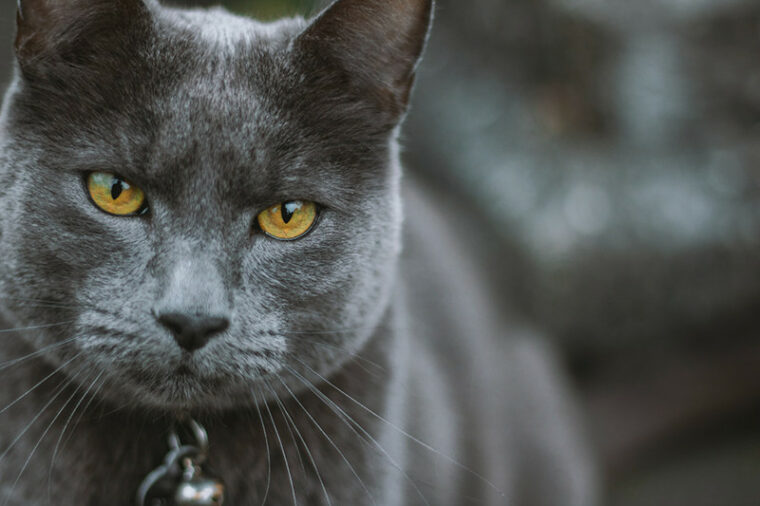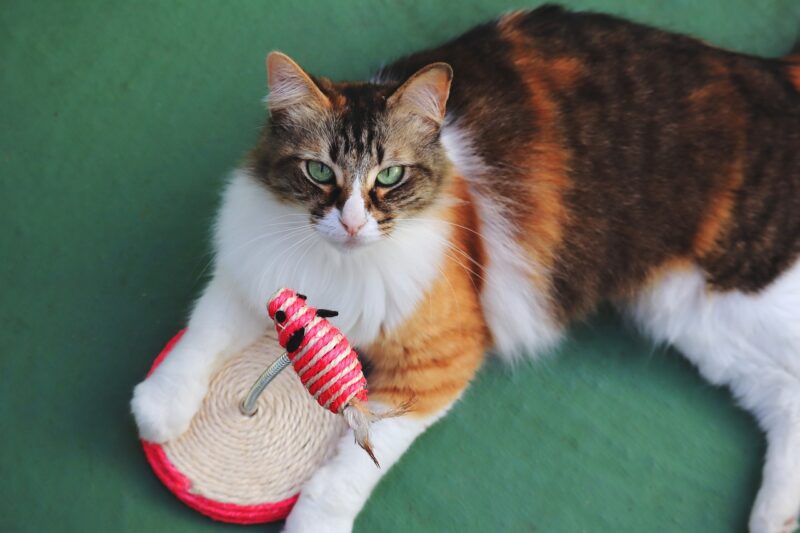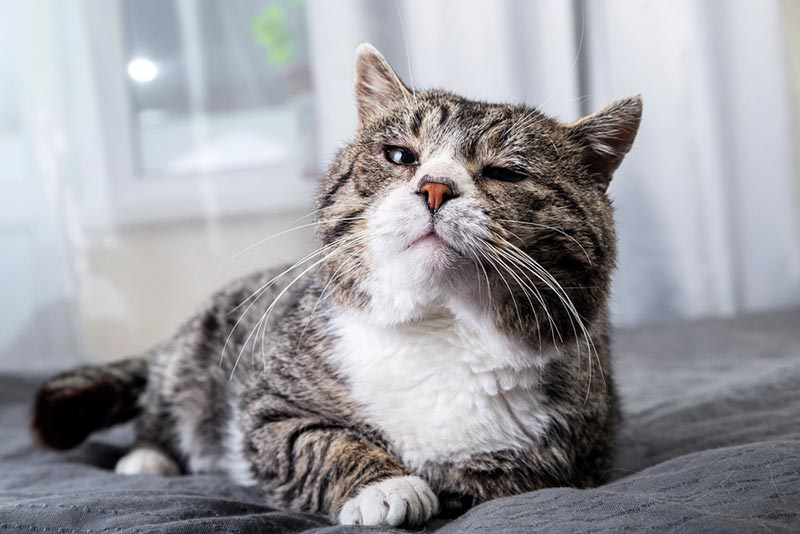
Cats are beloved by people all over the world. People love cats’ personalities, intelligence, and perception. All of these traits and qualities that have been prized by humans for centuries originate in the cat’s brain. But few people know much of anything about a cat’s brain. How big are they? Are cats really that smart? How does the brain work to influence feline behavior? Those are some of the questions that will be answered here using information compiled from scientific studies and neurologists.
Here are eight amazing and fascinating facts about your cat’s brain.
The 8 Fascinating Facts About Your Cat’s Brain
1. Cats’ Brains Are the Size of Your Pinky
Despite their reputation of being perceptive and intelligent, cats actually have very small brains. A cat’s brain measures just two inches across. All of a cat’s faculties and instincts are stored and managed in that small area. Cats still manage to be very intelligent, even with relatively small brains. Cats have wide mouths and thick skulls that take up most of the space in the feline head.

2. Cats Are Considered Big Brained
There is a marker in science called the Encephalization Quotient (EQ) that determines an animal’s brain size compared to its body. The larger the brain, the higher the quotient. The higher the quotient, the smarter or more intelligent a species is considered based on brain power.
Animals with small brains and low IQs have EQ numbers that are less than one. Average animals with neutral relative brain sizes have an EQ number of one. Animals considered big brained have EQ numbers greater than one.
Cats have an EQ rating that ranges from 1.2 to 1.7 meaning they have marginally larger brains and more intelligence than the average animal. For comparison, humans have an average EQ number of 6.5-7.5. Humans have the largest brains and highest brain capacity of any animal on Earth.
3. Cats Have the Same Number of Brain Cells as Bears
In an interesting twist, house cats have the same number of brain cells in their cerebral cortex as a full-grown bear. A study conducted by a team of neuroscientists found that despite their incredible size differences, basic cats have roughly 250 million brain cells in their main processing facilities. Brown bears have 251 million cells in their cerebral cortexes. Theoretically, that means that bears and cats will have similar levels of decision-making speed and prowess. This type of comparison shows how sharp cats are compared to other animals with larger brains.

4. Cats’ Brains Are Very Lightweight
Cats’ brains do not weigh very much. In fact, the average cat’s brain weighs just 30 grams. That is the same weight as a penny or a lightbulb. In fact, 30 grams equates to just 1.05 Oz The brains of big cats like lions and tigers will weigh considerably more than that of a house cat but the weight will remain proportional to their size, in fact, they have a smaller EQ. For comparison, the brain of a newborn human weighs 370 grams on average or 13 Oz.
5. Cats Dream When They Sleep
Like humans and dogs, cats can also dream. When a cat enters rapid eye movement (REM) sleep, they enter a state where it can dream. Cats’ brains enter a similar state as human and dog brains while they are fast asleep. This REM sleep state causes their muscles to relax and their muscles to twitch. If cat dreams are as weird and off-key as human dreams, there is no telling what is going on inside their brains while they are fast asleep, but we know that they are experiencing something.
Considering that the average cat spends about 3/4 of the day sleeping, providing them with a comfortable bed is very important. The Hepper Nest Bed is our favorite choice thanks to its innovative and cat-tailored design. It features a wide lip for resting tired heads, a rounded bowl shape for maximum support, and a warm fleece liner to keep them cozy. Provide your kitty with the perfect lounger and bed by clicking here.
At Pet Keen, we’ve admired Hepper for many years and decided to take a controlling ownership interest so that we could benefit from the outstanding designs of this cool cat company!
6. Cats Have Excellent Visual Memory
Cats have an extremely good visual memory. That means that cats can recall faces, people, other cats, and events from years ago. According to scientists, cats can remember events for several years. Like humans, the exact memory quality of a cat will depend on the cat’s overall intelligence, brain health, and personality. Long-term memories can help shape a cat’s behavior in the long run as they adjust to past experiences and learns to trust certain people or other animals. If you feel like your cat recognizes you every time you return to your parent’s house, even if it has been years, that is because they likely do.
7. Cats Can Remember and Recognize Your Voice
Cats also have good audio memory in addition to good visual memory. Cats will learn your voice and will remember it even if you spend long periods of time away from the cat. This type of memory is what can cause a cat to come running when you greet it. It can also keep cats away. Cats can have negative associations as well as positive associations, and if a cat does not like someone, the sound of their voice can drive them into hiding. Audio memory can also bring up trauma from the past and cause cats to act fearful or scared based on memories from many years ago.
8. Cats Can Get Degenerative Brain Disease As They Age
Cats are very smart, and they have complex brain structures. Cats can also live for quite a long time. The combination of smarts and longevity has long made cats a popular pet. However, that means that cats are susceptible to the same types of cognitive decline that humans are. Cats can develop feline cognitive dysfunction (FCD), which is not too far different from human Alzheimer’s disease. Cats with FCD will slowly start to show signs of degradation in their mental faculties. Cats with FCD will lose social interactions and house training. They could become easily disturbed and disoriented and will have trouble sleeping.

Conclusion
Cats’ brains are amazing. Feline brains are objectively small, but despite the size, they pack a lot of punch. Cats have great memories and recollections. Cats have similar mental faculties to much larger animals like bears and dogs. Cats can even dream and enter a similar state as humans when they are fast asleep. Perhaps one day, we will know what cats dream about, but for now, we can only wonder.
Featured Image Credit: Edward Howell, Unsplash









